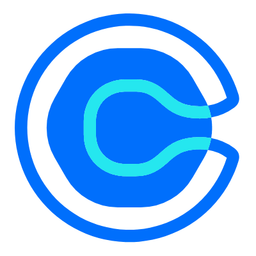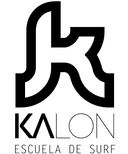Connect Calendly and Facebook (Meta)
Why do Calendly and Meta/Facebook Need to Be Connected?
Calendly is a popular scheduling and appointment booking software. Meta, formerly known as Facebook, is one of the most widely used platforms for advertising, which businesses use Businesses commonly use Facebook to grow their audience and further develop their brand, either through Facebook pages or ads. Without a Facebook Conversions API integration that attributes conversions to click ids, customers who first interact with a brand on Facebook and enter funnel by completing Calendly form often may not be recognized when they purchase a product. Both platforms keep a rich set of data, but without integration, such as from Able CDP, a very low percentage of the purchases following Calendly form completions will be correctly shown in Facebook Ads Manager reports.
Here are some reasons why conversion tracking built into Facebook Pixel (Meta Pixel) and Facebook Conversions API Gateway are not enough for Calendly lead forms:
- Many purchases following a Calendly booking are made after sign-up and tracking cookies set by Facebook Pixel on ad click are not available in browser cookies anymore.
- Often, conversion would be happening server-side, such as a CRM closed deal or a Stripe payment after the end of trial.
- Even when purchases are made entirely online, it's not uncommon for a portion of sales made through ads to be unattributable to campaigns. This is due to users using multiple devices, ad blocker plugins, and client-side tracking generally not being reliable.
- Sending conversions to Facebook Conversions API including identifier assigned by Facebook to a user and customer match parameters solves cookie-related reporting problems by sending more data, allowing it Facebook to recognize conversions from anonymized IOS clicks.
- These missing sales from Facebook that go unreported are caused by missing data, which occurs when there is no help from an integration platform such as Able CDP that ensures all sales data is properly attributed in Facebook.
Combining browser and server-side tracking to report conversions via the server-to-server Facebook Conversions API integration solves these problems. Attributing server-side conversions to the original click id and sending together with customer details via a server-to-server Facebook Conversion API integration is required to report all of them in Facebook (Meta) Ads Manager.
A Complete Solution for Integrating Calendly and Meta/Facebook
Able Customer Data Platform is the ultimate Calendly and Facebook integration.
It combines browser tracking with server-side tracking, linking website activity with purchases on the back-end to build a complete journey of each customer across Calendly, Facebook and other platforms.
This allows you to attribute 99% of sales to the correct marketing source, ad click and landing page and obtain data to inform strategy.
In addition to having precise reporting data on Calendly bookings, Able attributes future conversions in any platforms to the original visitor who completed Calendly booking form, allowing to report sources of such conversions and send to Facebook and other ad platforms attributed to the original click identifier.
All of this without coding and complex manual set-up of the connection between Calendly and Facebook. Able already knows how to connect marketing data between Calendly and Facebook.
How Able CDP Integrates Calendly and Meta/Facebook
Able tracks Calendly booking form completions as well as purchases, both done in Calendly or externally – such as closed won CRM deals and Stripe purchases, attributing purchases to the original visitor tracked by Able, allowing it to send purchase conversions to Google Analytics and ad platforms such as Facebook.
Able Customer Data Platform combines browser and back-end tracking to:
- store Facebook Click id, including the original ad click id (fbclid), when available, as well as browser id (fbp) when a Calendly form is completed.
- attribute successful payments to the Facebook click ids and send conversions with additional customer match parameters.
- send Advanced Match Parameters. Customer email, phone, name and address help Facebook to attribute sales when a click id parameter isn't available or is inconclusive
This ensures that each Calendly conversion, be it a booking or a purchase, is attributed to the correct Facebook (Meta) ad campaign, enabling you to understand precise performance and return on ad spend for each Facebook (Meta) campaign.
(Note: With Meta's modelled conversions, Ads Manager adds slight random variation to the reported data to ensure users' privacy. In the case studies we've done with our clients, we commonly see Ads Manager figures being within 10% of the actual conversion volume.)
5 Steps to Connect Calendly with Facebook by Using Able
Step 1. Sign up for a free account
Complete the sign up form to get an Able trial account set up instantly. No credit card required.
Step 2. Install Able tracking code on the website
After signing up for a free account, Able CDP will prompt you to add code to your website.
This tracking code will record ad click ids and details of the original landing page visit, as well as lead form submissions, allowing to attribute customers to website visitors. Able CDP uses its tracking to capture UTM parameters, referrer URL and landing page URL, store them in its own attribution database together with the personal identifiers such as email or phone, entered by customer in lead and order forms, allowing it to associate all future customer activity with the original website visitor source.

Presence of Calendly forms on the website is normally detected automatically. If it wasn't, open the "Funnel" tab, press "Add Service Integration", select Calendly and enable the "Add service to the funnel stack" option:

Press "Generate" in the Get Code section to generate a unique tracking code to add to your site.
Able CDP page view tracking doesn't install its own cookies and relies on third-party identifiers such as Google Analytics Client Id to connect customer activity between website pages. Please enable cross-domain measurement in Google Analytics if your landing and lead/order pages are hosted on different domains.
Note: Able CDP only supports embedded Calendly forms. This is required in order to associate visitor completing the form with the landing page view and click ids present in the URL at the time of the initial visit.
Step 3. Connect Able to Calendly
Able uses the server-side Calendly API to retrieve all customer details from Calendly, ensuring that Facebook's Conversions API and other ad platform server-side tracking APIs have access to complete customer details, including the email.
Open the "Funnel" tab, press "Add Service Integration" and select Calendly.

Press "Connect Calendly" and follow the steps to let Able access Calendly.

This is required in order to let Able retrieve values entered by the website visitor such as email or phone in order to attribute future conversions to them.
Once connected, enable retrieval of Schedule events from Calendly:

Whilst the only available event type on this screen is "Schedule", Able will automatically transform free bookings to "Schedule" events and paid bookings to "Purchase" events.
Step 4. Connect other conversion sources to Able
If purchases aren't made through Calendly paid bookings, the platform handling them will need to be connected to Able to notify it when a purchase occurs.
Able will then use the email to attribute purchase to the visitor who completed Calendly form – as well as their source and Facebook click id.
Commonly used platforms supported by Able include:
- Payment systems like Stripe
- CRMs like Salesforce and Scoro
- E-commerce platforms like Kajabi and WooCommerce
See a full list of available marketing API integrations.
Conversions can also be sent to Able from custom applications or Zapier as webhooks.
Able's solution differs from the built-in Zapier integration with Facebook in that it provides a complete experience, looking up the exact click ID corresponding to the visitor, rather than only sending an email, thus providing near-complete event matching precision.
Step 5. Connect Able to Facebook
1. Set up Facebook Events Manager
- Open Facebook Events Manager.
- If you have existing Pixel of a Dataset that you'd like to use, open it.
- Go to the Settings tab and click Generate access token.

For more granular permissions setup, you could also create System Users and Tokens in Facebook Business Settings manually.
2. Add Access Token to Able
Paste the access token you've created in the previous step and save it. Leave refresh token empty.
3. Enable Outbound Integration
Select the credential you've just created and Purchase event type.
If the token you're using has 'Manage Ad account' permission, Able will display list of Ad Accounts, which allows to select an ad account and a pixel you'd like to use from the list.
Otherwise, copy a Pixel or Dataset ID from Facebook Events Manager and paste into the 'Adspixel' field:

Select event such as Schedule or Purchase and paste the Pixel or Dataset ID into the "Adspixel" configuration field, leaving other fields empty:

Learn More
Read more about Able CDP tracking and attribution engine and how it utilizes a customer journey database to correctly attribute all purchases to the original visitors.
Read more about server-side tracking and Able's Facebook (Meta) Conversions API integration implementation.








